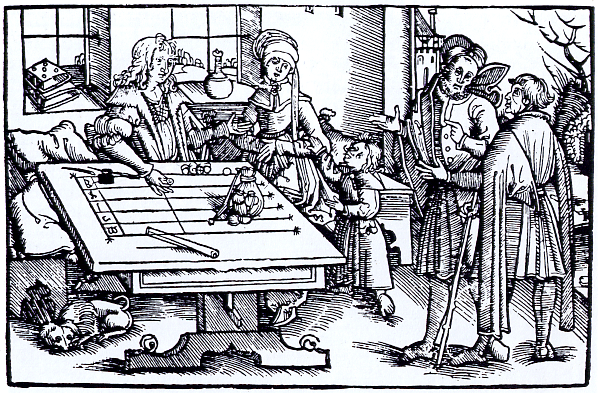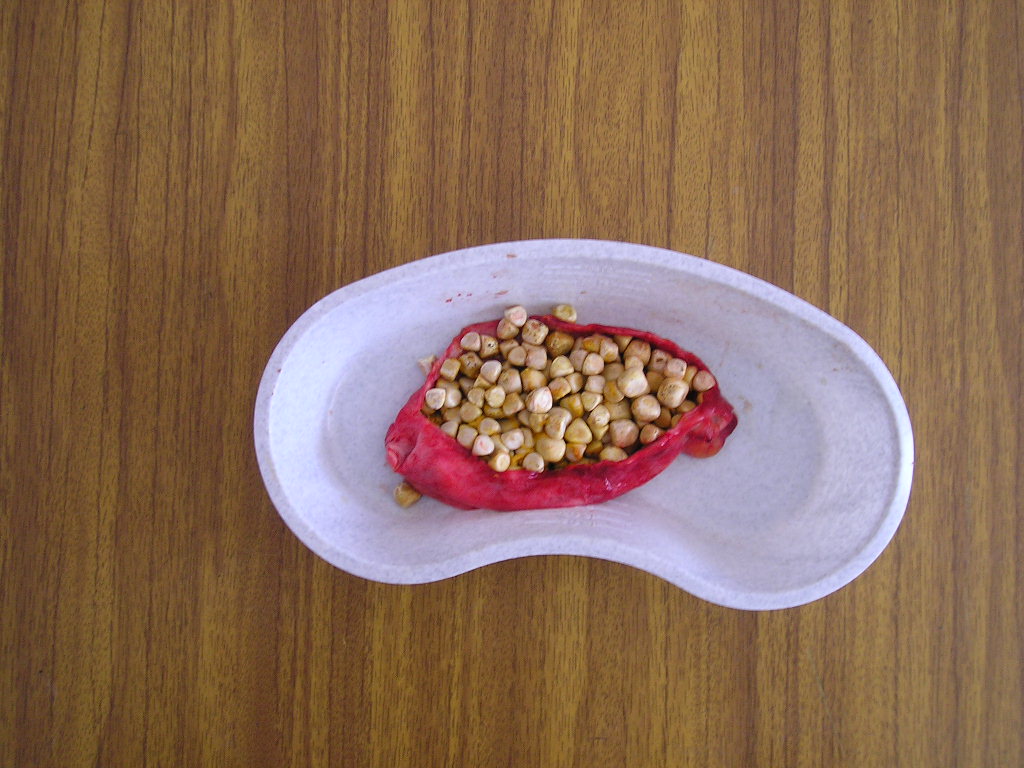On stones, mathematics and eschewing bad puns

Excluding patients with multiple titanium joint prostheses, the most common metal in the human body is calcium. This fact will assist in countless pub trivia competitions.
Chemist Humphry Davy first isolated pure calcium in 1808 by electrolysis of limestone. He named it ‘calcium’ from the Latin ‘calx’ meaning limestone. Fittingly, a decade prior he himself had become significantly stoned on nitrous oxide gas during a series of experiments to discern its chemical properties. (He concluded that it caused ‘a great disposition to laugh’, while noting in passing its soon-to-be groundbreaking anaesthetic effects).
The Latin word ‘calculus’ is the diminutive form of ‘calx’. A calculus described a little pebble used for counting. Strings of calculi on a frame formed an abacus. The verb ‘calculere’ literally meant ‘to use pebbles to perform arithmetic’ – to calculate, if you will. Leibnitz thus chose ‘calculus’ as the name for his newly invented system of calculating rates of change. Unfortunately, this etymology has encouraged puns based on ‘calculus rocks!’ and similar, which would not be funny even if under the influence of nitrous oxide.
Stones formed in various bodily organs are dubbed calculi, such as renal calculi and gallbladder calculi. Incidentally, urinating out a kidney stone is said to be the most painful thing a human can experience, including childbirth (this is based on a sample population of kidney-stone suffering mothers I have surveyed over the years).
Other stone-based etymologies pepper the human body. One of the skeleton’s densest bones is a rock-hard wedge of skull housing the middle and inner ear. It is named the petrous bone, from the Greek ‘petra’ meaning ‘rock’. Petroleum is thus ‘rock oil’ while to be petrified is to be turned to stone.
In a move of breathtaking unimaginativeness, Swedish chemist Arfvedson named a new element isolated from stone ‘lithium’, from another Greek word for stone: ‘lithos’. Earth’s uppermost mantle and stony crust is named the lithosphere. Printing using inscribed metal plates is still called lithography (‘stone drawing’), harking back to its origins of using stone slabs. The inner ear, behind its stony petrous bone, houses tiny calcium carbonate otoliths (‘ear stones’) to whose rattling you owe your sense of gravity and acceleration in space.
Finally, our English word ‘stone’ derives from the Proto-Germanic word ‘stainaz’. Germans morphed it to ‘Stein’, nowadays the common abbreviation of ‘Steinkrug’ (stone jug) for a drinking vessel. Before glass, steins were commonly made of stone or some sort of rock-based ceramic, hence the stony etymology. Albert Einstein’s surname, then, was literally ‘one stone’. This no doubt earned him some hefty schoolyard bullying. Let’s hope he wasn’t sporting a ‘calculus rocks!’ badge too.


Author:
Date Posted:
February 24, 2017
